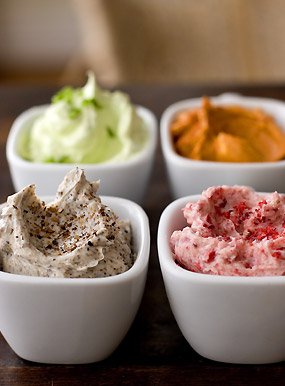I have a
distinct memory of being in my great grandmother’s kitchen. The walls were painted
baby blue and it was a tiny room. And it was warm, the faint aroma of vanilla and ginger, coconut and cinnamon...
It was fall.
It had to be close to Halloween because I remember my Mom’s godfather bringing
me a Casper the Friendly Ghost mask to play with. The guy who owned the candy
store on the block took me trick or treating around the building (it may have
been just his apartment and his wife gave me candy), and then playing with a
giant bunny in their living room.
I was around
two, just shy of three years old, and I’d flown first class for the first and
only time in my life.
One of Mom’s
cousins was visiting. He was about 17, I think; but his emotional and
intellectual age was closer to mine, certainly no higher than six. He was a
sweetheart, at least with me; and he always behaved with Abuelita (which is
what we both called his grandmother).
An indulgent
grandma, she asked if we wanted anything and both screamed out, “¡Arroz con
dulce!”
So Abuelita
took out her big cast iron caldero, the rice, raisins, vanilla, and assorted
ingredients we did not know the name to, and the big spoon. We sat at the tiny
kitchen table intently watching her stir. Occasionally she looked back at us,
and she’d chuckle and talk sweetly to us.
After endless
cooking (we couldn’t tell time then, so anything that made us wait in torture was "forever!"), she poured the candied rice in the glass
dish and placed it on the counter.
She instructed us to retire to the living
room where all the grown-ups were.
“We can’t
eat that until it cools down,” she told us.
Frankie and
I looked at each other and did the only sensible thing. We competed for her affections but time was our enemy, and the enemy of my enemy is my friend. We understood this instinctively. So we paired off. He
helped me up on the counter and stood opposite me.
It took a
bit for the adults to realize we were among the missing and awfully quiet – a sign
of serious trouble where I was involved. Abuelita found us in the kitchen (yes
we heard them calling our names, but we were busy!).
“What are
you doing?!!” she demanded.
Frankie was
not used to her yelling at him and he clammed up. I took the lead, “You said we
couldn’t eat it until it cooled off. We’re helping, Abuelita!”
We were
blowing on it to cool it off.
When the weather
starts to turn coolish and we approach the holidays I always think of this
moment because I loved my great grandmother dearly and still miss her, but also
because hers was the best arroz con dulce in the universe. I have only matched
it once and it was a fluke.
Arroz con
dulce is a Puerto Rican delicacy but other Caribbean and Latin American countries
have their own version of it. Generally, it is made around the Christmas
holidays. Simply it is candied ginger and coconut rice, with raisins and cinnamon. It's rice pudding with a Latin flare (buy some rum if you haven't any, I'm going to teach you a sweet kitchen trick)!
Tomorrow I
will bring you a few different recipes, an international perspective on the
culinary idea so you can check out the different versions, and hopefully the
desire to make some for yourselves.



































